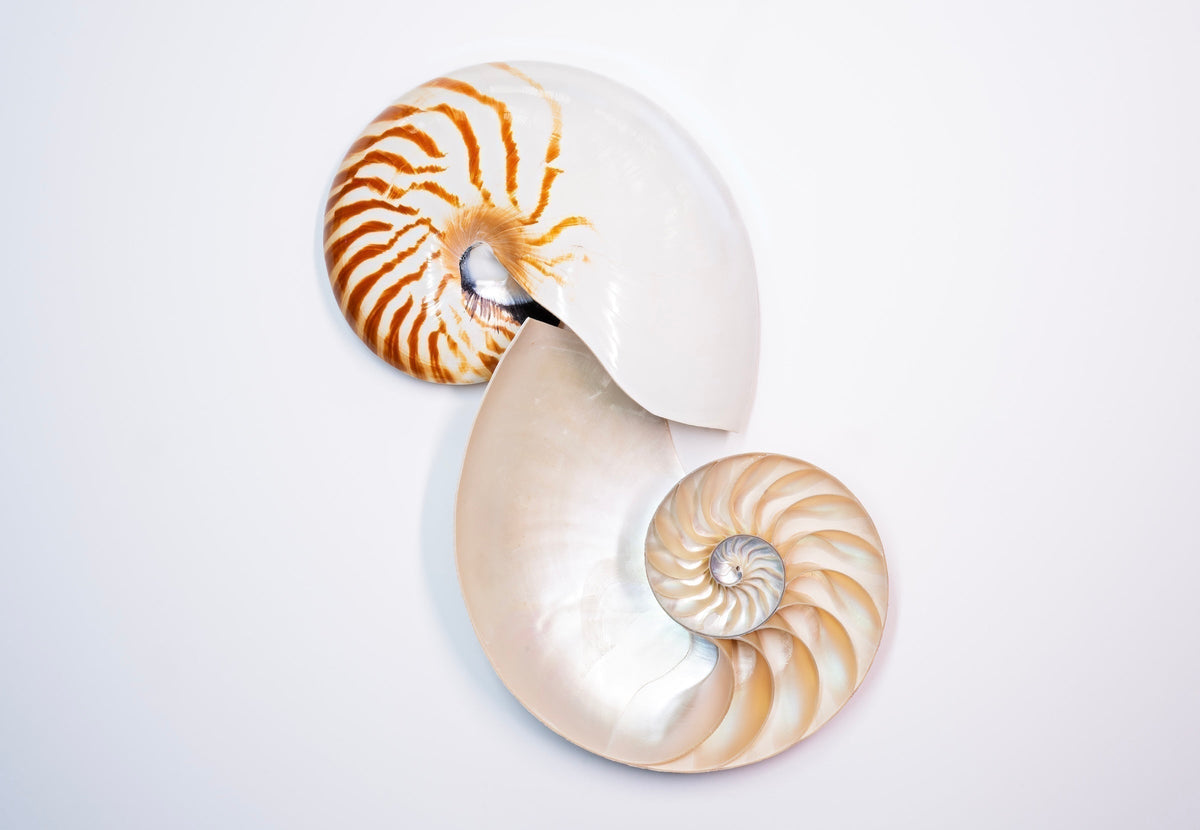
Why the Fibonacci Spiral Is Nature’s Most Beautiful Pattern
|
|
Time to read 2 min
Cart
Your cart is empty
|
|
Time to read 2 min
"Mathematics is the language in which God has written the universe."
– Galileo Galilei
From the curl of a wave to the swirl of a seashell, spirals appear everywhere in nature. Among them, the Fibonacci spiral — born from a mathematical sequence where each number is the sum of the two before it — has a particularly timeless appeal.
We are drawn to it instinctively. Psychologists suggest it’s because the pattern mirrors the way life naturally grows — balanced, proportional, and harmonious. In coastal home decor, art that features this spiral not only captivates the eye but also creates a subtle sense of peace in a space.
The Fibonacci sequence starts like this: 0, 1, 1, 2, 3, 5, 8, 13, 21…
Each number equals the sum of the two before it, and when these numbers are turned into a series of squares, their edges form a curve — the Fibonacci spiral.
This curve appears in countless natural forms: sunflower seed arrangements, pinecones, hurricanes, galaxies, and of course, shells. The curve’s consistent proportions are also related to the golden ratio, nature’s blueprint for efficiency and beauty.
The nautilus is perhaps the most famous example of the Fibonacci spiral. Each chamber of its shell grows proportionally larger in perfect alignment with the golden ratio.
In coastal art, the nautilus represents both mathematical wonder and oceanic grace, making it a centerpiece in many homes seeking balance and beauty.
Four nautilus shell halves reveal the perfect Fibonacci spiral — nature’s own blueprint for harmony and balance, echoed in coastal-inspired art.
In Feng Shui, spirals symbolize the free, unobstructed flow of chi — energy moving naturally without barriers. In coastal Feng Shui, spiral forms enhance the water element, associated with wisdom, abundance, and emotional flow.
Placing spiral designs like nautilus, sundial, or giant tun shell prints in entryways or creative spaces helps guide visual energy, encouraging movement and connection in a room.
Unlike the nautilus, sundial shells present the Fibonacci spiral in a flat disc. Their tight, concentric patterning almost looks like it was drawn with a compass.
In home styling, sundial shells make excellent accent art pieces because they’re both instantly recognizable and full of visual detail.
Sweeping curves and warm tones give the giant tun shell a bold yet soft presence. When styled with orchids or tropical greenery, it becomes a striking example of spiral geometry meeting organic beauty.
This shell works beautifully in living rooms, bedrooms, or as part of a larger gallery wall where spirals guide the eye across multiple pieces.
Go big for impact – Large spiral shell prints create instant focal points.
Layer with natural textures – Combine glossy shells with driftwood, linen, or woven baskets.
Place with intention – Use spiral imagery in transitional spaces to subtly guide movement.
Balance with oceanic color palettes – Blues, sandy neutrals, and pearlescent whites echo the shells’ tones.
By mixing shell types but keeping the spiral motif consistent, you create visual harmony that feels intentional and connected.
Whether in the polished cross-section of a nautilus, the flat geometry of a sundial, or the graceful arcs of a giant tun, the Fibonacci spiral is a bridge between mathematics and beauty — between science and soul.
Bringing it into your home through coastal glass prints is more than a style choice — it’s a way of living in rhythm with nature’s most beautiful pattern.


